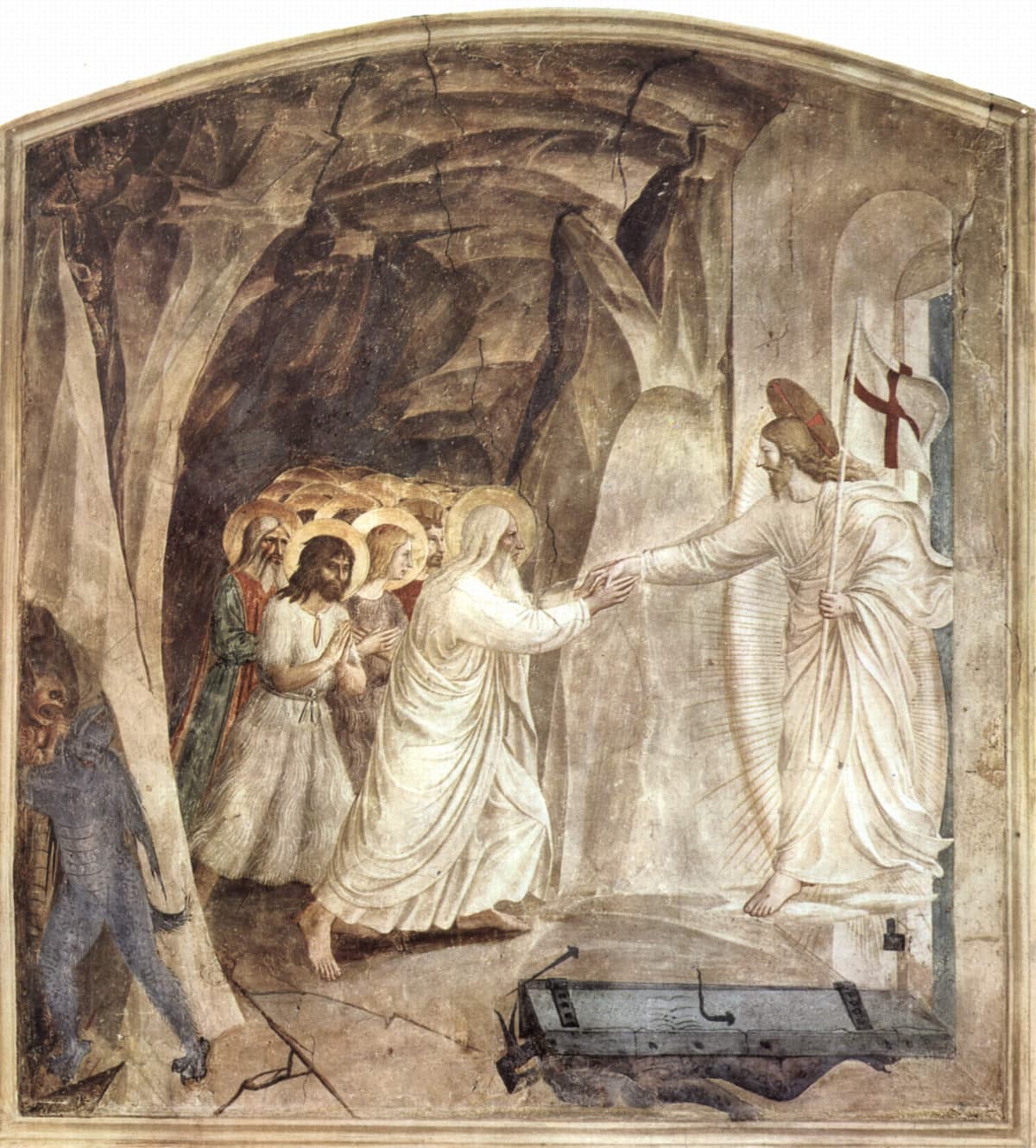A
Anonymous10/18/25, 16:03No.18084522
Why did Jesus wait three days to resurrect? Why didn't he resurrect right after he came down from the cross shouting 'IM BACK, BITCHES!'

14
Replies
A
Anon10/18/25, 16:22No.18084555
there is no explanation in the canonical texts. There was a non-canonical tradition, very popular during the medieval period, called "the harrowing of hell" that answered this question by saying during those three days Jesus went to hell, battled demons, and freed all the righteous souls who had died from the dawn of time to his crucifixion, and led them to heaven. There are many surviving works of art from the medieval period that portray this. I like this Italian fresco from the early 1400s because you can see the door to hell has been booted off its hinges by Jesus and crushed a demonic gatekeeper underneath it.Today there is a somewhat obscure reference to it in the catholic apostole's creed, which goes:I believe in God,
the Father almighty,
Creator of heaven and earth,
and in Jesus Christ, his only Son, our Lord,
who was conceived by the Holy Spirit,
born of the Virgin Mary,
suffered under Pontius Pilate,
was crucified, died and was buried;
he descended into hell;
on the third day he rose again from the dead;
he ascended into heaven,
and is seated at the right hand of God the Father almighty;
from there he will come to judge the living and the dead.I believe in the Holy Spirit,
the holy catholic Church,
the communion of saints,
the forgiveness of sins,
the resurrection of the body,
and life everlasting.Amen.Note the line "he descended into hell." That is not in the bible, that's from the harrowing of hell. Always found that ironic considering how aggressive the catholic church was at many times of violently suppressing non-canonical texts.Also, there are gnostic gospels that do have Jesus laughing at the romans as his spirit departs from the cross, telling them how pathetic they are to think they can harm him, and that the man on the cross they killed was just some poor sod he possessed with his divine essence.

A
Anon10/18/25, 16:24No.18084558
He was dead. Full stop. The three days prophesied the old testament and proved he conquered actual death, not just pulled a "lol jk" faint. Resurrecting immediately makes it look like a trick. Waiting three days confirms the body was cold and he still won
A
Anon10/18/25, 17:16No.18084673
Sign of Jonah. Plus he didn't want to respawn on the Sabbath as God is into everyone chilling one day a week.
A
Anon10/18/25, 17:23No.18084690
He died at like 3pm on a Friday and was alive 6am on Saturday. So like 36ish hours.
A
Anon10/18/25, 17:35No.18084718
The number 3 is symbolic, signifying completeness, Innana was stuck in the underworld for 3 days for instance, there's also the story of Jonah being in the fish for 3 days.
A
Anon10/19/25, 01:47No.18086088
I think you'll find the number 3 is kinda big with Christians, in general.
A
Anon10/19/25, 01:52No.18086102
It takes a lot of time to surreptitiously gather enough babies for blood sacrifice for a rite of such power.
A
Anon10/19/25, 01:52No.18086103
There's a tradition in Judaism that the soul sticks around the body for three days until fully departing. By waiting 3 days, it shows that Jesus was well and truly dead-dead by cultural standards. From a Jewish perspective, it's a way of showing that he was well and truly dead, had fully departed the Earth, and still came back.
